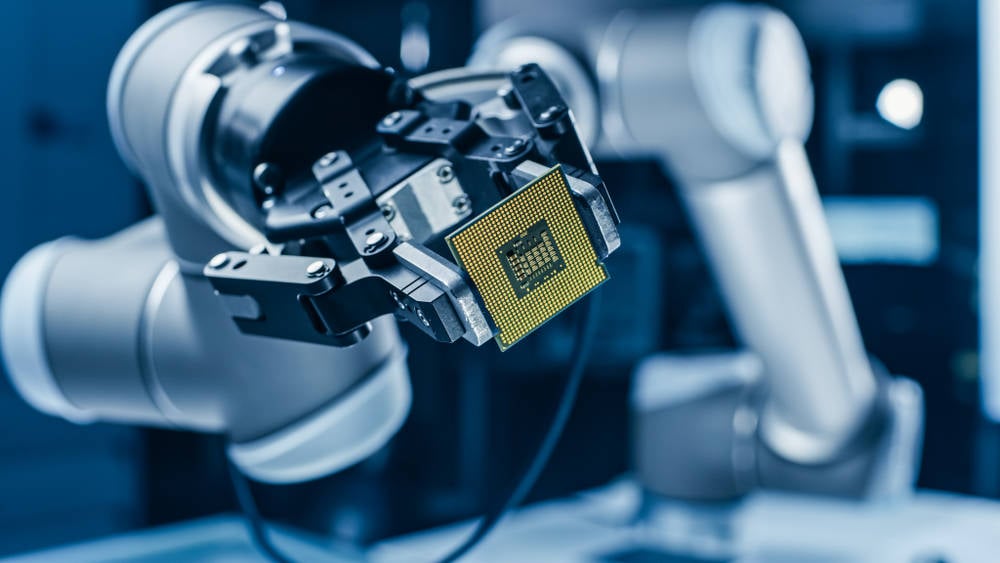As Europe Hopes To Double Its Share Of Global Chip Production, Intel Comes Along With $20bn, Plans For Fabs

Intel is planning to spend as much as $20bn on building a couple of chip manufacturing plants in Europe, with more in the works.
CEO Pat Gelsinger has been traveling across the region and just met French President Emmanuel Macron, German Chancellor Angela Merkel, and Italian Prime Minister Mario Draghi to discuss component supply-chain problems amid the ongoing global chip shortage.
Industries including automotive, consumer tech, and health have been hit hard by the semiconductor drought, and fabrication plants are struggling to fulfill a backlog of orders.
The European Commission, for one, hopes to boost production of “cutting-edge and sustainable semiconductors” in Europe to 20 per cent of global output by 2030, up from about 10 per cent right now, according to its Digital Compass initiative. That, at least, might ensure Europe gets a decent supply for parts for the future.
Intel wants in on this, and hopes to expand its presence on the continent. It hopes to build in Europe at least one factory for manufacturing and another for advanced packaging, Greg Slater, VP of global regulatory affairs, told the Financial Times over the weekend. France, Germany, Belgium, and the Netherlands are being considered as hosts for these facilities, and Intel is expected to name locations by the end of the year.
Chipzilla is, we're told, prepared to blow as much as $20bn on these factories over the next decade, with an eye on building up to eight fabs on a 1,000-acre site somewhere with the necessary infrastructure around it. Intel teased it could spend up to $100bn during the lifetime of these Euro plants.
“We are well placed to make this an ecosystem-wide project, not just a couple of isolated paths in one member state,” Slater said. “We do believe that this is a project that will benefit Europe at large.”
- Intel data center boss Navin Shenoy exits as CEO takes sledgehammer to group
- Intel made $2bn+ takeover offer for RISC-V chip darling SiFive – report
- When the chips are down, Intel's biggest gamble isn't what to do – it's whom to do it with
- You've got it down Pat: Intel boss says 2020 was so strong, a 20% drop in data center sales now is to be expected
That said, Intel will most likely be expecting something in return. In April, Gelsinger reportedly said he was seeking an €8bn ($9.5bn) subsidy to make up for the high cost of manufacturing in Europe. "What we're asking from both the US and the European governments is to make it competitive for us to do it here compared to in Asia," he told Politico Europe. Intel has since denied a specific figure was mentioned in that interview.
"We have been investing in Europe and support the EU’s ambition to produce 20 per cent of semiconductors globally by 2030," a spokesperson for the chip giant told us today. "Building a new foundry in Europe will enable the region to facilitate chip supply for both European as well as global customers.
"We are considering several countries at this time, but we have not yet decided. There are many factors to consider as we explore suitable factory sites. We are encouraged by the support we are getting from customers and governments. Government incentives will play a significant role in accelerating and expanding our investment plans around the world.
"Currently it can cost 30 per cent more to operate a fab in Europe or the US compared to Asia. Also important is access to a diverse workforce, robust supplier ecosystem and reliable infrastructure. We are considering many locations and plan to announce our next phase of expansions in the US, Europe, and other global locations within the year."
Chipzilla also previously announced it was building a 3D-packaging semiconductor lab in New Mexico, USA. Meanwhile, rival chipmaker TSMC has apparently started construction of six plants in Arizona. The first one is expected to start cranking out up to 20,000 5nm chip wafers every month by 2024. ®
From Chip War To Cloud War: The Next Frontier In Global Tech Competition
The global chip war, characterized by intense competition among nations and corporations for supremacy in semiconductor ... Read more
The High Stakes Of Tech Regulation: Security Risks And Market Dynamics
The influence of tech giants in the global economy continues to grow, raising crucial questions about how to balance sec... Read more
The Tyranny Of Instagram Interiors: Why It's Time To Break Free From Algorithm-Driven Aesthetics
Instagram has become a dominant force in shaping interior design trends, offering a seemingly endless stream of inspirat... Read more
The Data Crunch In AI: Strategies For Sustainability
Exploring solutions to the imminent exhaustion of internet data for AI training.As the artificial intelligence (AI) indu... Read more
Google Abandons Four-Year Effort To Remove Cookies From Chrome Browser
After four years of dedicated effort, Google has decided to abandon its plan to remove third-party cookies from its Chro... Read more
LinkedIn Embraces AI And Gamification To Drive User Engagement And Revenue
In an effort to tackle slowing revenue growth and enhance user engagement, LinkedIn is turning to artificial intelligenc... Read more

